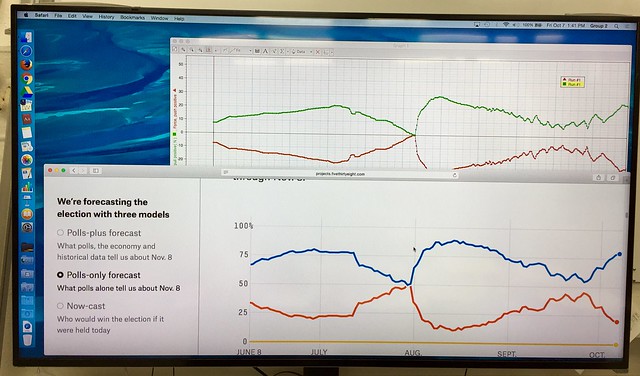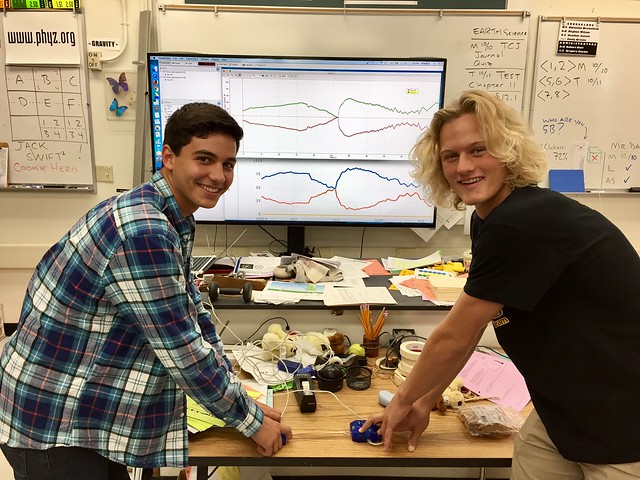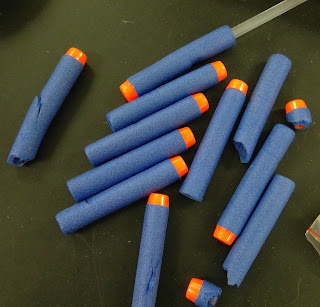I've written about making simple
PVC dart gun shooters and how to use them in the classroom
with NGSS. I just did this lab with my Physics students, after their projectile unit test because they did not have to calculate projectiles shot at an angle. It was a way to work in a design challenge with my students while letting them explore angled projectiles.
Students were shown how the shooter works and asked to find the largest horizontal range. They were to record their angle, launch height, etc. and discuss the design changes in between each trial. No additional questions, no conclusions, just a quick and fun experiment about experimental designs.
"Can we stand on the tables Mrs. B?" Sure!
"Can we pull the balloon back
all the way?" Sure!
"Can we cut the straw?" Sure!
They just had to record how far it went and how they changed their experimental design.
Seven classes did this lab between my partner teacher and I, usually students worked in partners, spread out across the quad of our campus. We had a running record during the day to see who could in fact make it the farthest. The first few classes hit 38 m, later classes had an unconfirmed 53 m but the largest confirmed was about 45 m. Doing the experiment with so many older students we ran into a few new problems I'd like to warn you about:
Use brand name bullets.
A quick
Amazon search brings up lots of refill sets for the small Nerf bullets you need. We opted for a knock-off brand and got 200 bullets for $20. We expected to be set for life as I had previously only broken one Nerf bullet out of 20 with three classes of freshmen testing it last year. We were wrong. Bullets would tear after a single firing, the orange tip would come off upon impact and sometimes even just indentations on the side above the straw was enough to get poor results.
Have extra balloons.
Some of my football players decided to get into a "who can pull the balloon the farthest" contest and frequently broke their balloons. Sometimes it just happened in the course of the experiment. Have lots of extra balloons on hand to repair shooters with duct tape. We tried to use the same size and same thickness balloons for consistency. A few students noticed that the replacement balloon wasn't exactly the same length as before and might change their experiment.
Careful with metric tapes.
I have one 50 meter windup tape, nine 10 meter windup tapes and one trundle wheel. By the end of the day I had to completely unwind the 50 m one in order to rewind it correctly and we were down two 10 m tapes. Students did not understand how far 10 m was and would run out the tape with such vigor they broke the internal spindle of the tape. They can not be wound again, if you shake them you can hear all the broken plastic pieces rattle around the inside of the case.
The trundle wheel was far superior for measuring and was easier to reset in between trials. Although I did have one student hole the trundle wheel at arm's length straight out parallel to the ground and asked how it worked. He kind of sighted along it, maybe he thought it was a laser level??









